
Aglaonema: planting, cultivating, and care
Contents
The Aglaonema in a nutshell
- The Aglaonema is a houseplant native to Southeast Asia
- Its highly attractive colourful foliage makes it a very trendy plant
- It can produce flowers all summer long, in the form of spathes, typical of the Araceae family
- This houseplant enjoys moderately lit rooms
- It appreciates a certain level of atmospheric humidity.
The word from our expert
The Aglaonema is a houseplant, very popular and widely found in our homes. Perhaps because this herbaceous plant, native to Southeast Asia, offers a beautiful diversity of colourful foliage, particularly ornamental, and great ease of cultivation. In its natural state, the Aglaonema grows in tropical forests, hence its need for warmth and atmospheric humidity. Conditions it will easily find in homes, even in rooms with moderate light. With lanceolate and oblong leaves, often variegated, the Aglaonema produces characteristic inflorescences of the Araceae family, generally whitish or greenish, but which are not particularly decorative. These inflorescences often blend in with the foliage. They undeniably resemble those of Arums, which belong to the same genus.
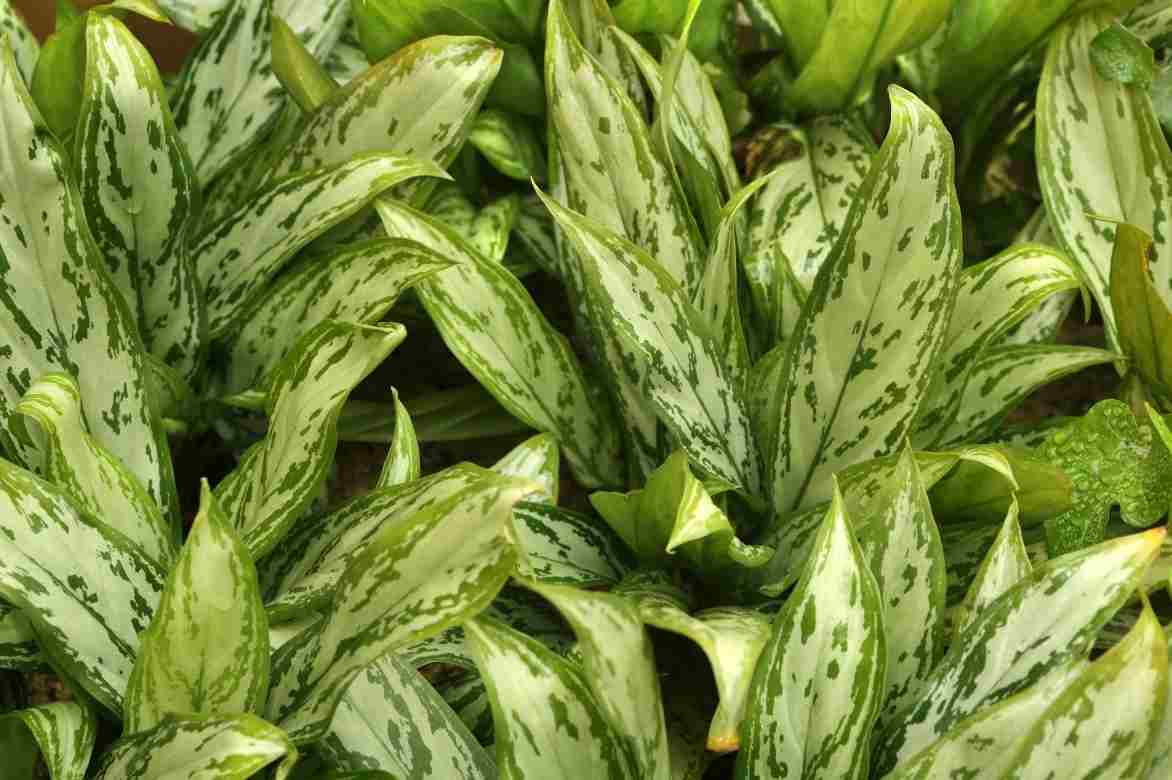
The Aglaonema ‘Silver Queen’
botany
Botanical data
- Latin name Aglaonema
- Family Araceae
- Common name Chinese evergreen
- Flowering Summer
- Height 1 m
- Exposure moderate light
- Soil type light and permeable
- Hardiness frost-tender
The Aglaonema belongs to the vast Araceae family, plants distinguished by a characteristic inflorescence. It manifests as a large bract, called a spathe, which surrounds numerous small flowers grouped on a stem, the spadix. Aglaonema is actually a genus comprising around sixty species, all native to Southeast Asia, from India to the Philippines and China. In fact, the genus Aglaonema is the Asian counterpart of the American genus Dieffenbachia, which belongs to the same family.
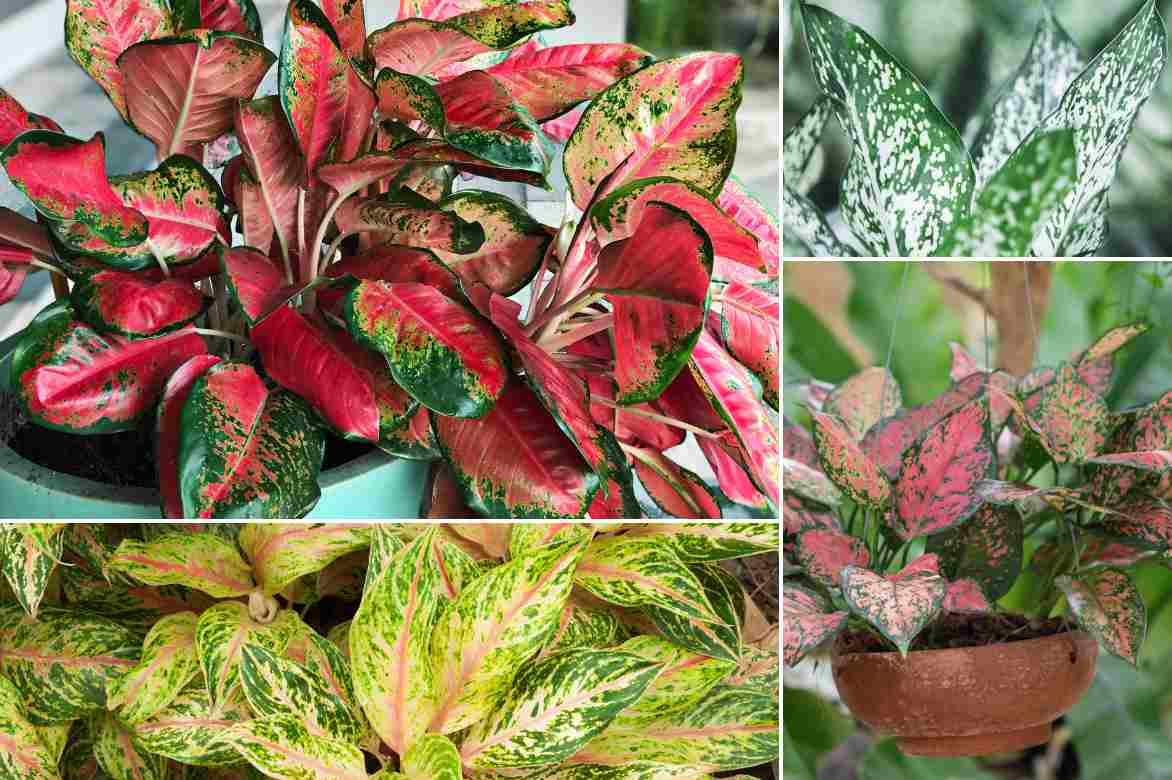
The extraordinary variety of Aglaonema foliage
Among this multitude of species, it is certainly Aglaonema commutatum that is the most cultivated. It originates from a vast area stretching from Malaysia to the Philippines and can exhibit a great variety of forms with more or less pronounced striations. This plant can reach 50 cm in height. Aglaonema costatum, native to India, is practically stemless and offers very dark green foliage. It tends to be more creeping. The highly resilient Aglaonema modestum has rather large stems, which, in cultivation, can grow to over 1 m in length. In recent years, numerous hybrids have allowed for varied pleasures thanks to their highly colourful foliage, variegated, marbled, or mottled. Among the best-known hybrids, we can mention ‘Silver Queen’ with its ashen green foliage edged with dark green, or ‘Silver Bay’ with its green and silver leaves…
From an etymological perspective, the name “Aglaonema” comes from the Greek “aglaos,” meaning “bright,” and “nema,” referring to the stamens of the flowers.
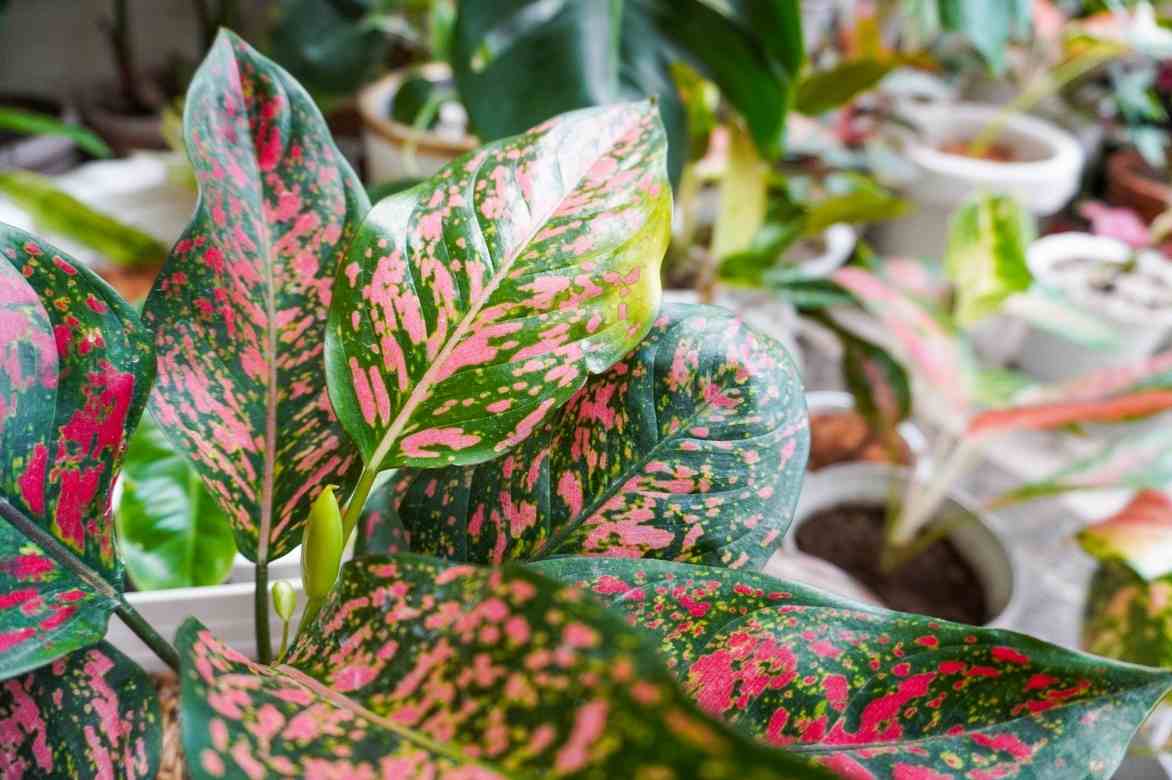
Hybridisation has created varieties with foliage dotted with pink or red
The genus Aglaonema thus comprises many herbaceous perennial plants, non-hardy, which grow naturally in tropical forests. They have a relatively fleshy root system. These are evergreen, small-sized plants that easily become bushy. Indeed, numerous shoots develop at their base, forming a beautiful dense, compact, and upright clump. The leaves are entire, generally oblong and lanceolate. They are borne on long petioles. Most of the foliage is variegated, grooved, spotted, marbled, dotted, or streaked with varying shades of green, cream, silver, yellow, or even red or pink. The mottled appearance of these leaves makes these houseplants true focal points in a décor.
Aglaonema also stands out for its inflorescences, which consist of a spadix, rather insignificant, on which small unisexual or bisexual flowers are inserted, more or less enveloped by a bract called a spathe. The flowers are quite common in cultivation, but they are generally cream-white or greenish. These inflorescences, which appear in summer, are not particularly decorative. On some species, they may be followed by red or yellow berries that can make the plant more attractive.
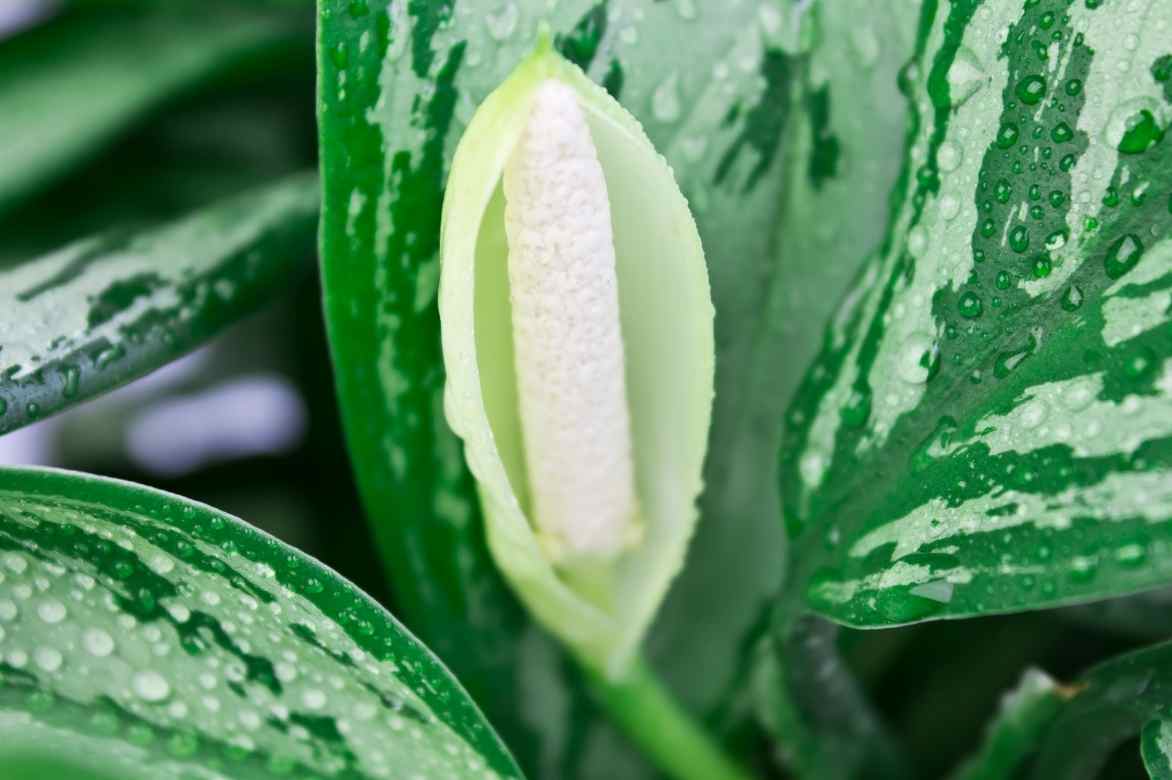
The flower of Aglaonema, characteristic of the Araceae family
It should be noted that the leaves, stems, and flowers of this plant are toxic. All these parts of the plant can cause skin irritation and vomiting if ingested. It should therefore be kept away from children and pets.
Several species and varieties
| Aglaonema Red Dragon |
| Aglaonema Red Valentine |
| Aglaonema Red Zirkon |
| Aglaonema Snowflake |
| Aglaonema pictum Tricolor |
How to plant Aglaonema?
When to Plant Aglaonema?
This indoor plant can be planted at any time of the year.
How to Plant It?
Aglaonema thrives in a light and permeable substrate. Ideally, it should be planted in a mix of leaf mould and manure (or compost) in equal parts, with a little sand or perlite added. However, a good houseplant compost, mixed with a handful of heather soil, will also make it very happy.
- Choose a container slightly larger than the root ball, as Aglaonema prefers to feel snug. The pot must have drainage holes.
- Gently remove the Aglaonema from its pot and lightly loosen the roots if they are tightly packed.
- Place a good layer of clay pebbles, coarse gravel, or pumice at the bottom of the pot to ensure drainage.
- Fill half the pot with the substrate and position the Aglaonema without burying the collar.
- Fill the pot with the remaining substrate, pressing down gently with your fingers to avoid air pockets.
- Water the substrate lightly, ensuring it is not completely waterlogged.
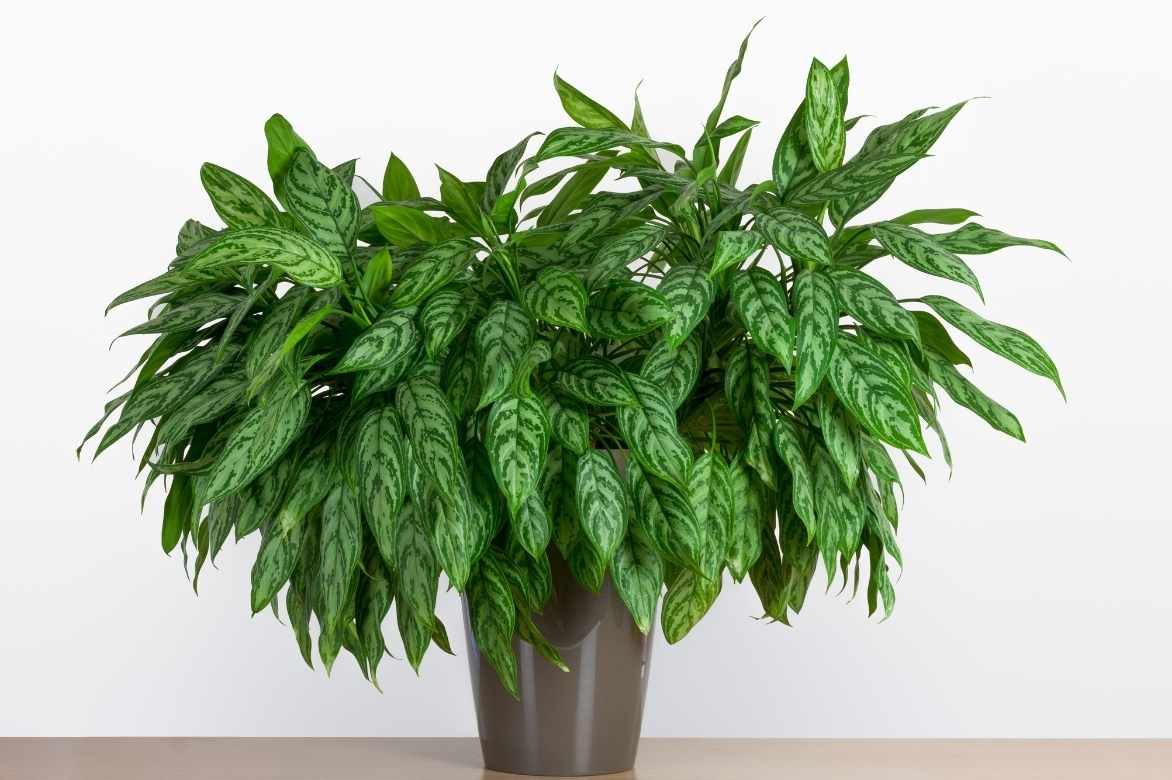
Where to Place It?
Generally, Aglaonemas tolerate fairly moderate, even low light. Therefore, moderately lit rooms, such as attic bedrooms, hallways, offices, or secluded corners of a main room, suit them perfectly. Only species and varieties with variegated foliage can tolerate more light to maintain their colours. Additionally, in brighter rooms, Aglaonemas tend to flower more.
Naturally, this plant dislikes direct sunlight on its leaves, which can cause the colours to fade.
Aglaonema requires a temperature between 15 and 21 °C, except in winter when it is best kept at 13 to 15 °C. However, being very sensitive to cold, Aglaonema cannot tolerate temperatures below 13 °C in winter. In any case, keep it away from heat sources and cold drafts. In summer, if you have a garden, this indoor plant can be placed outside in a shaded spot.
Additionally, it needs a fairly high level of atmospheric humidity.
How to care for Aglaonema?
With its tropical origins, the Aglaonema makes an excellent indoor plant. However, to ensure a beautiful, healthy, colourful, and robust plant, it’s essential to provide growing conditions as close as possible to its natural habitat. It particularly thrives in a fairly high ambient humidity.
Watering
Water generously in summer, about 2 to 3 times a week, and more moderately and spaced out in winter, when the plants are semi-dormant. The growing medium should never dry out completely, but it shouldn’t be waterlogged either. Ideally, let the top few centimetres dry out between waterings.
Watering is best done with rainwater, boiled and cooled water, or tap water left to stand overnight to allow the chlorine to evaporate. Always use water at room temperature to avoid thermal shock, which can harm indoor plants.
Be sure to remove any excess water, which should never stagnate in the saucer or decorative pot.
To maintain a certain level of atmospheric humidity for the Aglaonema, you can mist the foliage with non-calcareous rainwater, about once a week in summer. Alternatively, place the pot on a bed of clay pebbles arranged in a saucer and kept moist.
Cleaning the foliage with a damp cloth is also important to increase humidity.
Fertilisation
The Aglaonema is a relatively hungry plant and needs fertilising during its growth period, from March to October. A dose of liquid fertiliser for indoor plants is recommended twice a month, at watering time.
Pruning
Pruning is unnecessary. Simply remove dead or damaged leaves, as well as faded and dry flower stems. Also, remember to rotate the pot frequently to prevent the plant from leaning towards the light, as the Aglaonema tends to exhibit phototropism.
Repotting
Repot every 2 to 3 years, in spring. Overgrown specimens can simply be top-dressed.
Diseases and Pests of Aglaonema
Quite robust, the Aglaonema is hardly susceptible to diseases. Only excessive watering and stagnant water risk causing root rot.
The colourful foliage can also be affected if growing conditions are not respected. Thus, variegated leaves losing their vibrancy in favour of green are a sign of insufficient light. On the other hand, yellowing foliage is more a manifestation of overwatering. If the tips of the leaves dry out, it is certainly because the atmosphere is too dry. It is essential to place the pot on a bed of moistened clay pebbles.
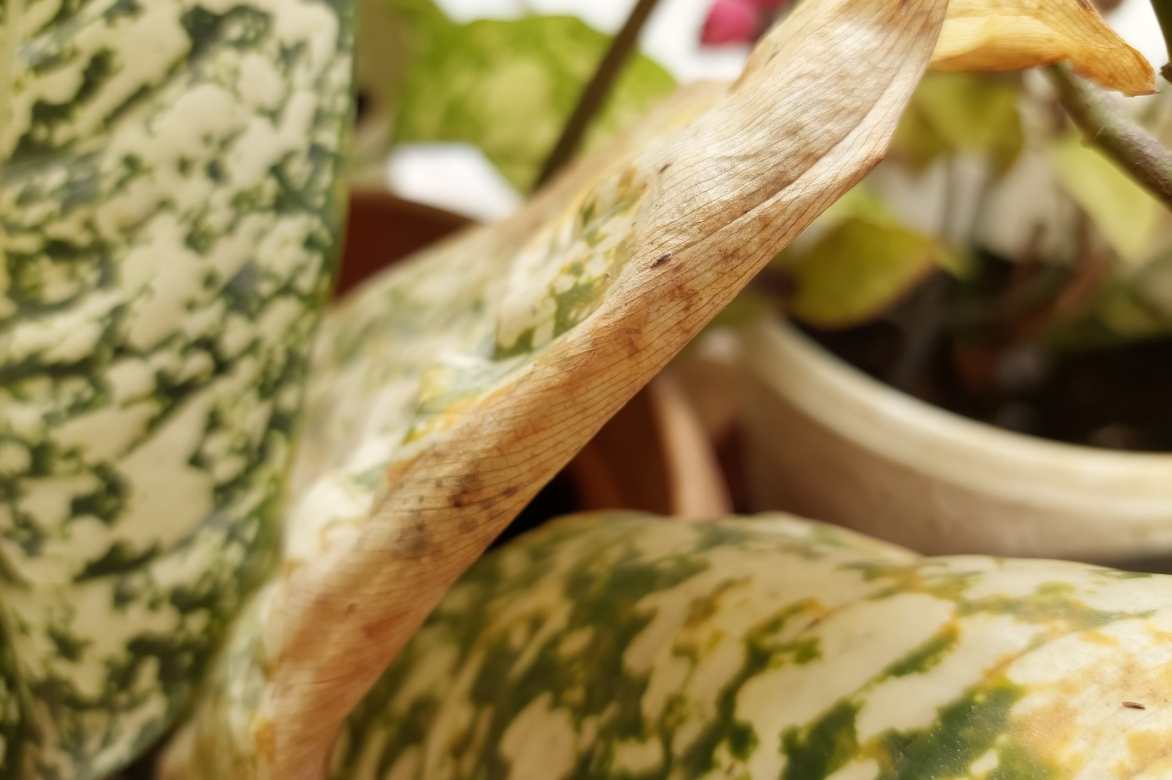
Dry foliage is a sign of an overly dry atmosphere
Otherwise, in an overly dry atmosphere, your plant may be prone to attacks by mealybugs or red spider mites. Aphids can also settle on the stems and leaves. To treat these parasites, I invite you to explore our three articles:
- Mealybugs: identification and treatment
- Red spider mites: identification and treatment
- How to get rid of aphids on indoor plants?
More details in our article Aglaonema: diseases, parasites and common problems.
How to propagate Aglaonema?
Aglaonema can be propagated either by propagation by cuttings or by division of clumps. However, the species Aglaonema costatum, which has very short, almost non-existent stems, cannot be propagated by cuttings.
Propagation by Cuttings
This propagation method involves using apical cuttings of defoliated stems or sections of naked stems with at least three nodes. The stem fragments should be buried vertically in a porous, sandy, and slightly moist mixture. A blend of special plant compost, supplemented with perlite and coconut fibre, is ideal. The substrate should be moist but not waterlogged. The cuttings should be placed in a bright room, away from direct sunlight, at a temperature between 20 and 25 °C.
The best time to propagate Aglaonema by cuttings is early summer.
Division of Clumps
If your Aglaonema has grown too large and you’d like to share it with loved ones, division is the quickest solution. This division should be done in spring. Simply unpot your plant and divide the rootstocks into two or three sections, ensuring each part has a number of buds. These sections can then be replanted.
Our little décor tip!
Available in a multitude of colours, Aglaonemas can be perfectly cultivated in groups of several pots. Simply vary the colours by placing varieties with deep green leaves, which are very tolerant of lower light, alongside others with silvery leaves, which also adapt to limited light. You can add colourful cultivars, which require slightly brighter light. Beyond their foliage, some varieties offer white or pink stems. The Aglaonema can also easily be paired with plants like Spathiphyllum or Pilea.
To highlight the colours of the leaves, use discreet and neutral planters, for example, woven natural fibre ones. A simple white planter is also perfect.
Its foliage will bring a tropical ambiance, even to the least well-lit rooms.
And to fully convince you to invite an Aglaonema into your home, know that it is a symbol of good luck in Asia.
Useful resources
Discover also our articles and tutorials:
- Aglaonema: care through the seasons
- Subscribe!
- Contents
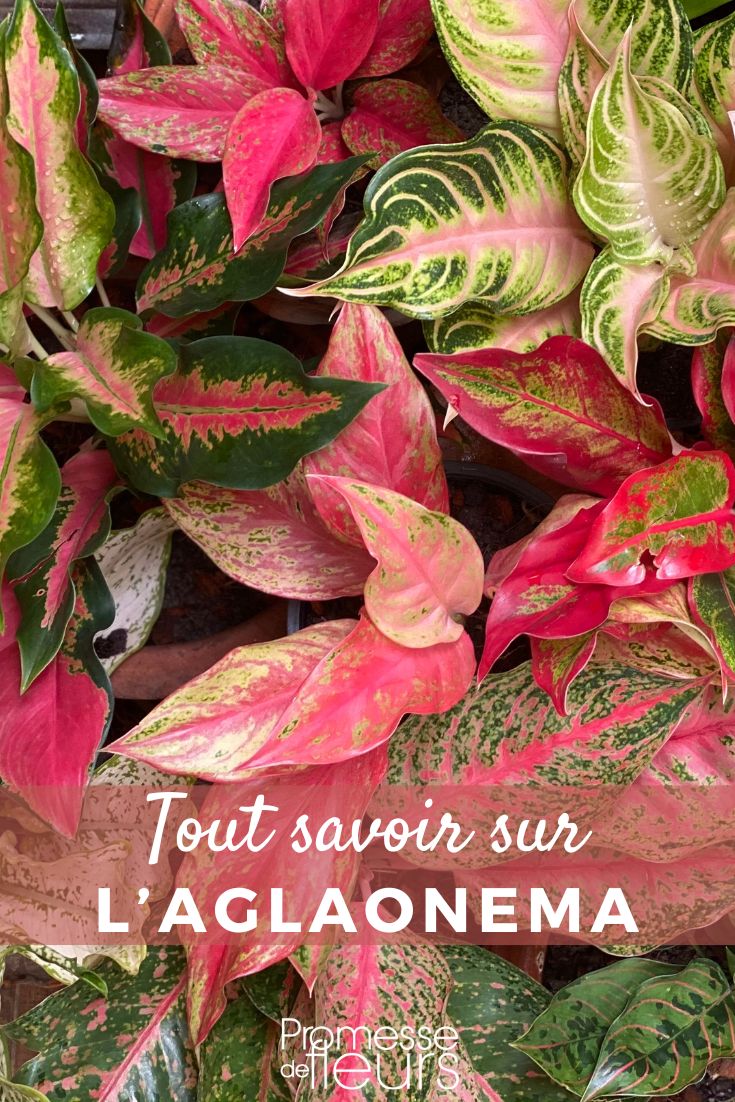































Comments